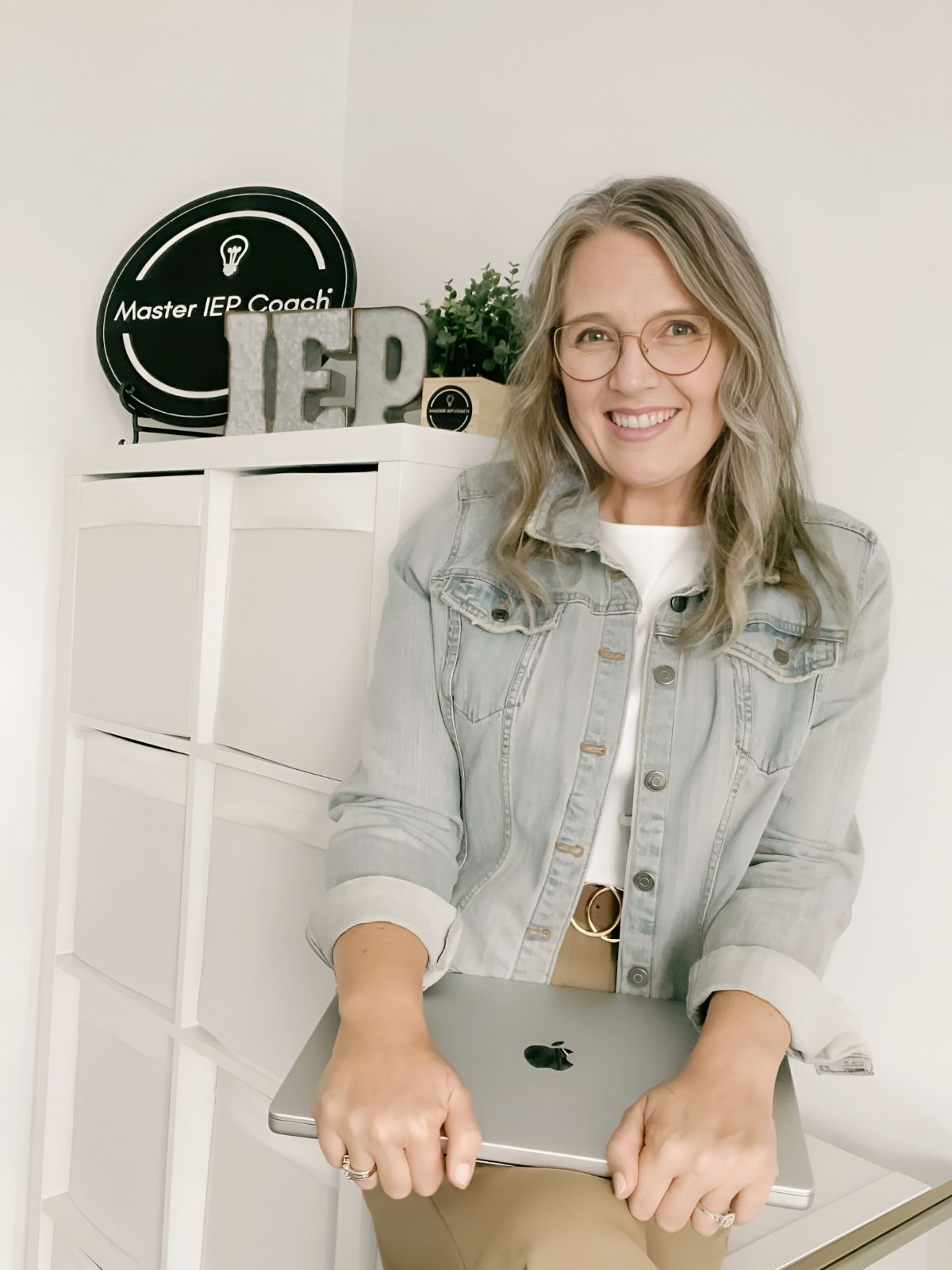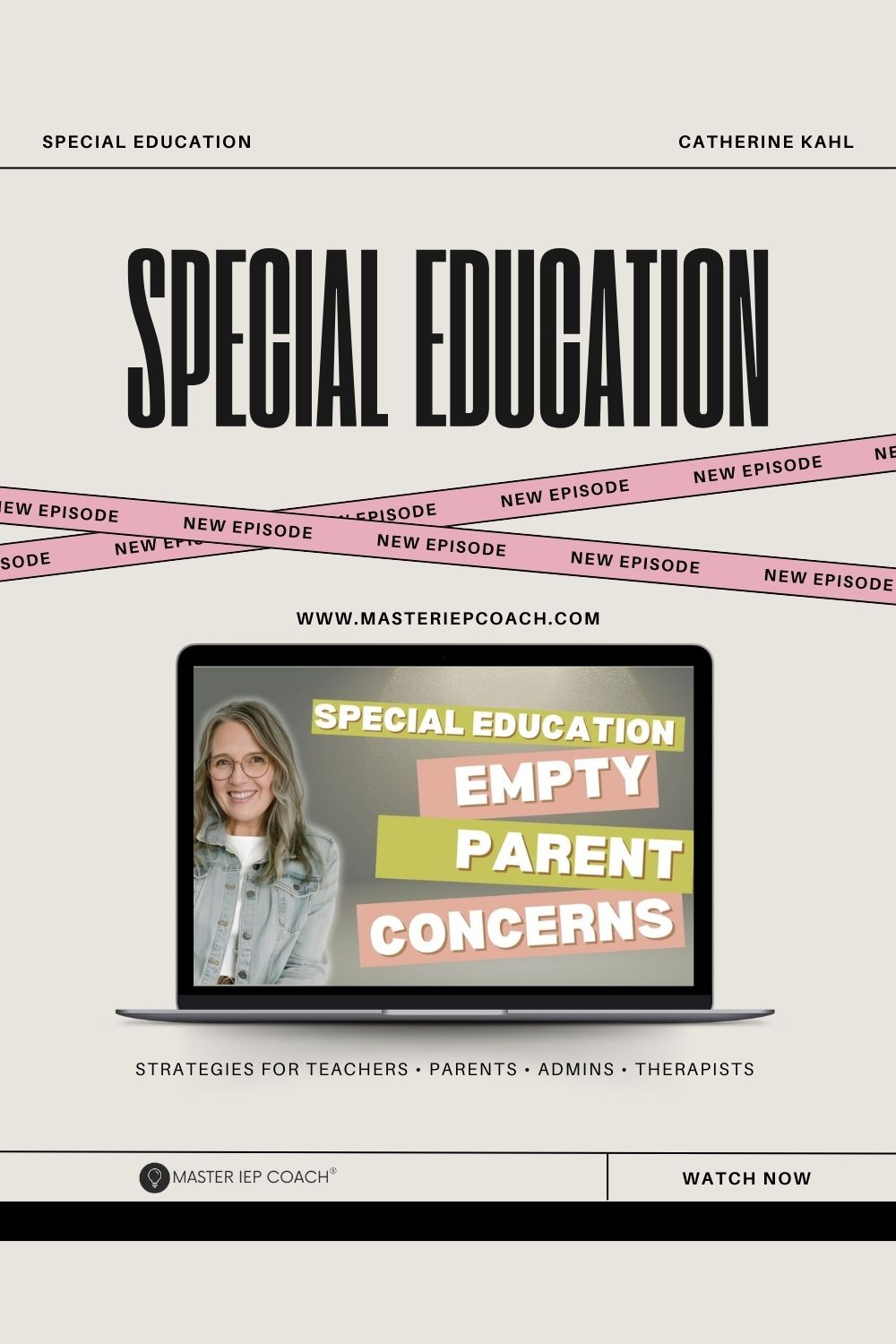Let me tell you about the moment I walked into my first classroom.
There were desks. A few bulletin boards. No curriculum. No supplies. And a giant stack of IEPs on my desk.
That was it. That was the welcome.
And as I sat down to figure out what my students needed, I started flipping through those IEPs… and I couldn’t believe what I was seeing.
Or more accurately, what I wasn’t seeing.
👉 Watch the video above for the full story of how this one section saved my sanity as a brand-new teacher—and how it can change the way you build IEPs too.
This IEP section? Completely blank.
You know the part of the IEP called Parent Educational Concerns?
I grew up in a house where there were always concerns. My brother has Down syndrome, and my mom was the one asking the hard questions. Making the phone calls. Sitting in those IEP meetings, making sure my brother got what he needed.
So when I saw “Parent has no concerns at this time”… over and over again… I just sat there like,
“Wait… what? That can’t be right.”
Either the concerns weren’t being asked for, or they weren’t being heard. And I knew I needed to change that—starting right in my own classroom.
The IEP phone calls that changed everything
So what did I do? I picked up the phone.
Yes, 21-year-old me, fresh out of grad school, started calling parents and saying,
“Hi, I’m your child’s teacher. I was looking through their IEP and I want to know—what’s most important to you this year? What are you most worried about?”
And I’ll never forget what happened next.
Every single parent was surprised.
Every single one said, “No one’s ever asked me that before.”
And then? They shared.
Concerns about friendships. Independence. Self-advocacy. The future.
And those concerns? I used them to shape how I set up my classroom, how I wrote goals, and how I supported students through the day.
It was the best thing I could’ve done—not just for that first year, but for every year that followed.
Why was this IEP section left blank in the first place?
Here’s what I’ve learned after 30 years of working with IEP teams across the country, addressing the Parent Concerns section:
- It’s mentioned at the end of the meeting. Everyone’s emotionally spent, and the question gets tossed out as a formality.
- There’s no structure. We expect parents to summarize their biggest fears and dreams in one sentence—on the spot.
- No one tells them this part matters. So they assume it doesn’t.
But the truth is: this section can be the driver of an IEP in the most awesome way.
When you ask better questions and give parents a way to think through their concerns before the meeting, you end up with an IEP that’s actually built around what the child really needs.
Here’s what I started doing before IEP meetings instead
I created a process. A simple one.
Whether you’re a teacher or a parent, you don’t need more checklists or jargon—you need something that works in the real world.
Here’s the basic breakdown:
| Step | What To Do | Why It Works |
|---|---|---|
| Start early | Ask families ahead of time: “What keeps you up at night about school? What’s going well? What do you want to see next?” | Gives time to reflect, not react |
| Break it down | Go through key areas—academics, social skills, behavior, communication, life skills | Helps families identify specific priorities |
| Document it clearly | Write it in the IEP the way they would say it—not just “Parent concerned about reading” | Keeps the voice authentic and actionable |
| Use it to guide your planning | Build goals and supports that reflect those real concerns | Makes the IEP meaningful (and legally stronger too) |
This is what I’ve taught every teacher I’ve mentored—and every parent I’ve coached.
You can’t build a “unique” IEP without parent voice
Let’s be real:
Teachers don’t have crystal balls.
There’s no way we can guess what’s going on at home, what’s keeping a parent up at night, or what a child needs beyond the test scores and classroom data.
That’s why this section of the IEP is so powerful.
When it’s used well, it connects home and school in a way that actually makes sense. It helps create a day that supports the whole child—not just the goals on paper.
And if you’re a parent reading this, I want you to know: your voice belongs in the IEP. Not just at the end. Not just as a “comment.” But as part of a strong foundation.
Not sure how to fix this IEP section?
Here’s what I want you to do next—seriously, today:
- Open up one of your child’s IEPs (or one of your students’ if you’re a teacher).
- Find the section called Parent Educational Concerns.
- Ask yourself:
- Does this reflect what matters most?
- Is it specific and useful?
- Could someone new to the team read this and understand this child better?
If the answer is no—it’s time to do something about it and I’d love to help you!
Want help with IEP decisions?
If this got your wheels turning and you’re ready to take the next step, I want you to come to my free workshop on becoming a Master IEP Coach®.
Whether you want to:
- Use these strategies for your own child,
- Support families in your school, or
- Start a business helping others (yes, that’s a thing, and I’ll show you how to do it),
…this free training will walk you through what’s working right now and how to get started.
👉 Click here to save your seat for the free workshop

Catherine Kahl, M.Ed has been coaching parents and teachers to solve IEP struggles for almost 30 years. Through her mentorship program, she helps parents, teachers, admins, and therapists become Master IEP Coaches®. Learn More Here.

+ show Comments
- Hide Comments
add a comment